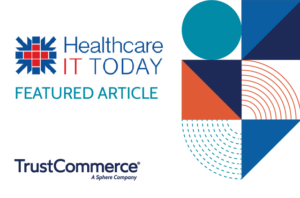There’s no doubt about it– over the last two decades, collecting payments from patients has become increasingly challenging. Part of the problem is rising patient out-of-pocket costs, which spiked by nearly 10% from 2020 to 2021, with these costs expected to rise by another 10% by 2026.
According to an often-cited McKinsey study, 74% of insured Americans are both able and willing to pay their out-of-pocket medical expenses, up to $1,000 per year, yet patient collections take over a month on average for most providers. Since collecting payments directly from patients generally takes longer and is more costly that collecting from other payers, many healthcare providers are falling behind financially, putting their practices at risk.
In other industries, the fee-for-service model delivers payments from consumers on a reliable basis. A business performs a service, presents a bill, and the consumer pays it. The healthcare industry operated this way many years ago, but since the advent of private and public healthcare insurance, the healthcare payment processing landscape has become a labyrinthine road with many dead ends and possible traps for the unwary traveler. In a recent survey by US Bank, nearly half of respondents said that healthcare was the most difficult industry in which to make a payment. Healthcare lags behind other industries in providing the patient billing and patient payment innovations consumers have come to expect in our “there’s an app for that” modern culture.
For patients, paying their medical bills can be difficult, not necessarily because of any lack of means. In fact, it’s the overly complicated healthcare payment process that appears to be the main culprit. According to healthcare revenue expert Karen Zupko, patient non-payment reasons include lack of clear communication, such as when the patient is unaware a bill exists, confusing bills and no time to inquire about them, or lack of patient payment options. Unreliable digital payment tools can also be a problem—patients may try to pay online through a payment portal that is malfunctioning, then quit the process in the middle without ever actually making a payment.
Slowly, the U.S. government is taking steps to simplify and lessen the burden of healthcare billing and payment for patients. However, providers themselves should take steps to make patient payment processing easy and convenient because of their significant stake in the game. For patients, non-payment of medical bills can eventually cause their case to be sent to collections, and in turn, lead to a lower credit score that can impact them for years to come. For providers, failing to collect from patients will lead to increased bad debt causing significant financial strain. The good news? It doesn’t have to be this way.
Just by simplifying the patient payment process, many providers are seeing their collection woes improve considerably over a short period of time. Some of the most effective strategies include providing increased price transparency so patients know what they owe, adding digital payment options including text-to-pay and digital wallet support (Google Pay Apple Pay), and keeping patient payment information on file for quicker payment.
For more information on how to add these patient payment processing capabilities to your practice workflows, contact a TrustCommerce sales representative or schedule a demo today.






